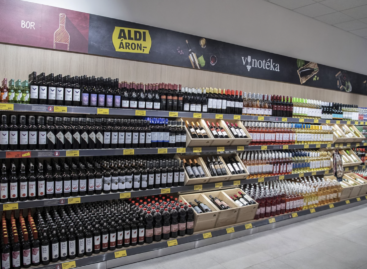AM State Secretary: a uniform EU nutritional labeling system is needed
Confusion is caused by the oversupply of nutrition labels on food packaging on the EU market, which is why the European Commission (EC) would introduce a harmonized system (FOPNL), which is also supported by Hungary, the Secretary of State responsible for food industry and trade policy of the Ministry of Agriculture (AM) said in Budapest on Friday.

(Photo: Pixabay)
Márton Nobilis emphasized at the professional forum series of the Nutrition, Lifestyle, Exercise Platform (TÉT) that the new nutrition labeling system should not be a disadvantage for traditional foods, and that the eating culture of each member state must be taken into account in its design. He also added that the new system cannot mislead consumers, it must work for the sake of the single internal market and equal competition and must be voluntary. The ministry, together with the TÉT Platform, conducted research with the involvement of about 4,000 Hungarian households, the results of which can help to create optimal EU regulations, he noted. The survey revealed that despite their price sensitivity, Hungarian consumers look for quality food and pay a lot of attention to the sugar and carbohydrate content of food. The research – in line with the experiences of the National Food Chain Safety Office (Nébih) – clearly pointed to an increase in consumer awareness. Many people consider the current regulation to be useful, although the visibility of the letters on the products would be improved, and it would be necessary to facilitate the interpretation of the indicated information, he said.
Ildikó Fazekas, the president of the TÉT Platform Association, also spoke about the fact that consumers often do not understand the markings, which is why he called education in this area important. The representative research was carried out with the participation of 3288 households, 44 percent of the surveyed consumers were satisfied with the information shown on the labels, 88 percent of them can easily interpret it, 62 percent take into account the nutritional content, and 44 percent believe that they can easily interpret the meaning of the indicated nutritional value.
MTI
Related news
New results of the winter seasonal food chain inspection have arrived
🎧 Hallgasd a cikket: Lejátszás Szünet Folytatás Leállítás Nyelv: Auto…
Read more >Opportunity to purchase new land
🎧 Hallgasd a cikket: Lejátszás Szünet Folytatás Leállítás Nyelv: Auto…
Read more >Nébih immediately suspended the operation of a game processing plant due to serious food safety problems
🎧 Hallgasd a cikket: Lejátszás Szünet Folytatás Leállítás Nyelv: Auto…
Read more >Related news
Bread and wine for 399 forints, mulled wine for 450 forints: ALDI opens its own downtown Christmas market
🎧 Hallgasd a cikket: Lejátszás Szünet Folytatás Leállítás Nyelv: Auto…
Read more >MBH Analysis Center: Hungarian tourism is soaring – further growth is expected in the hotel market
🎧 Hallgasd a cikket: Lejátszás Szünet Folytatás Leállítás Nyelv: Auto…
Read more >It’s really worth coming together: Lidl and its customers make Christmas more beautiful for 2,000 disadvantaged children
🎧 Hallgasd a cikket: Lejátszás Szünet Folytatás Leállítás Nyelv: Auto…
Read more >






